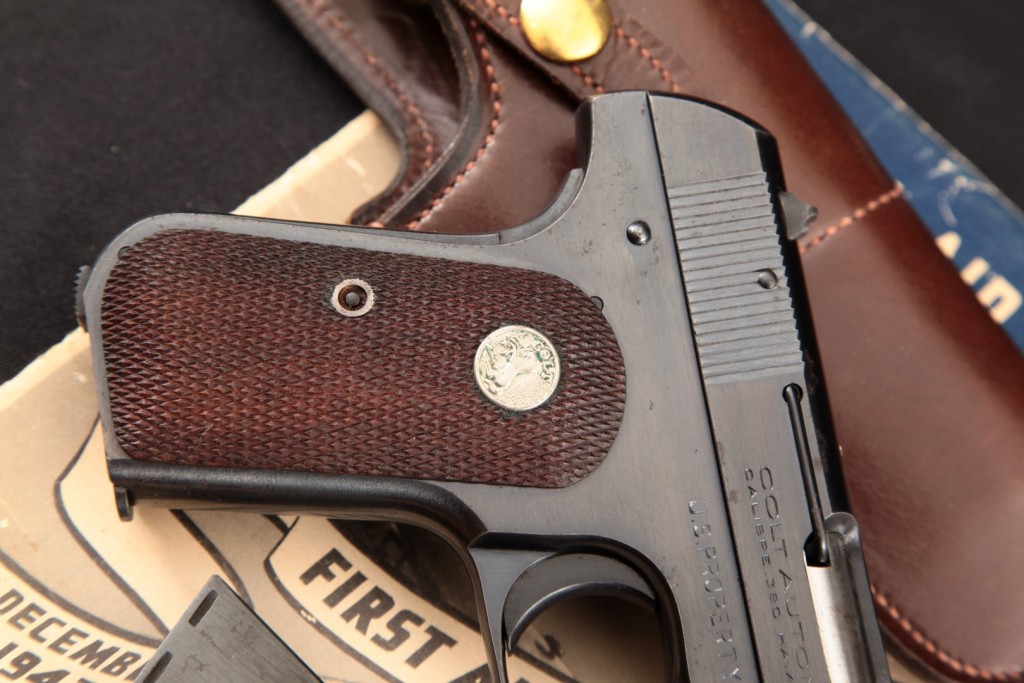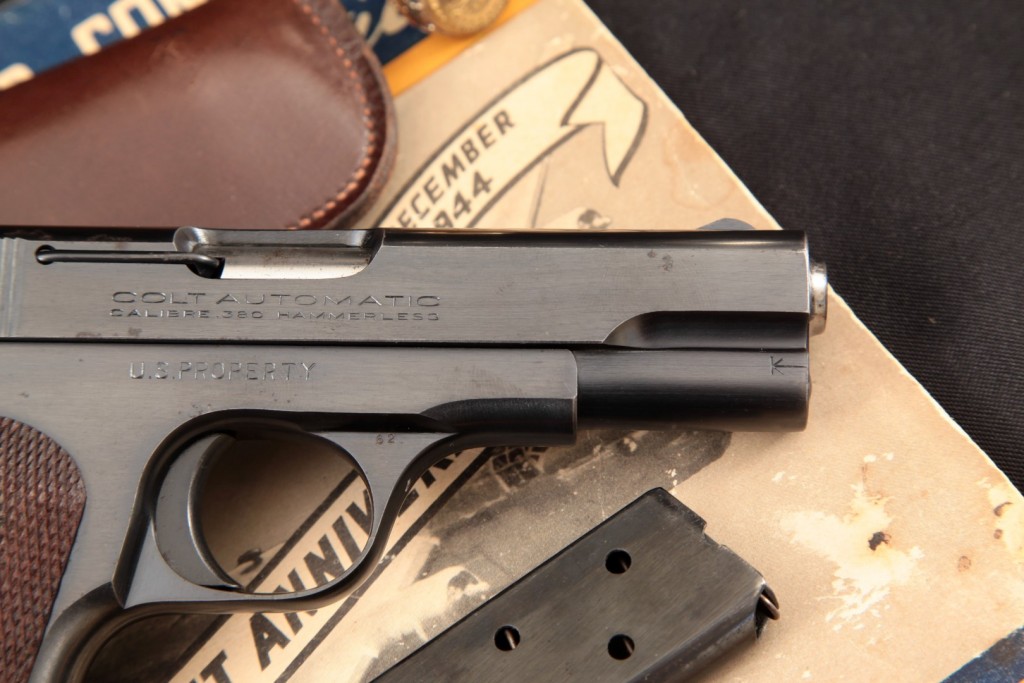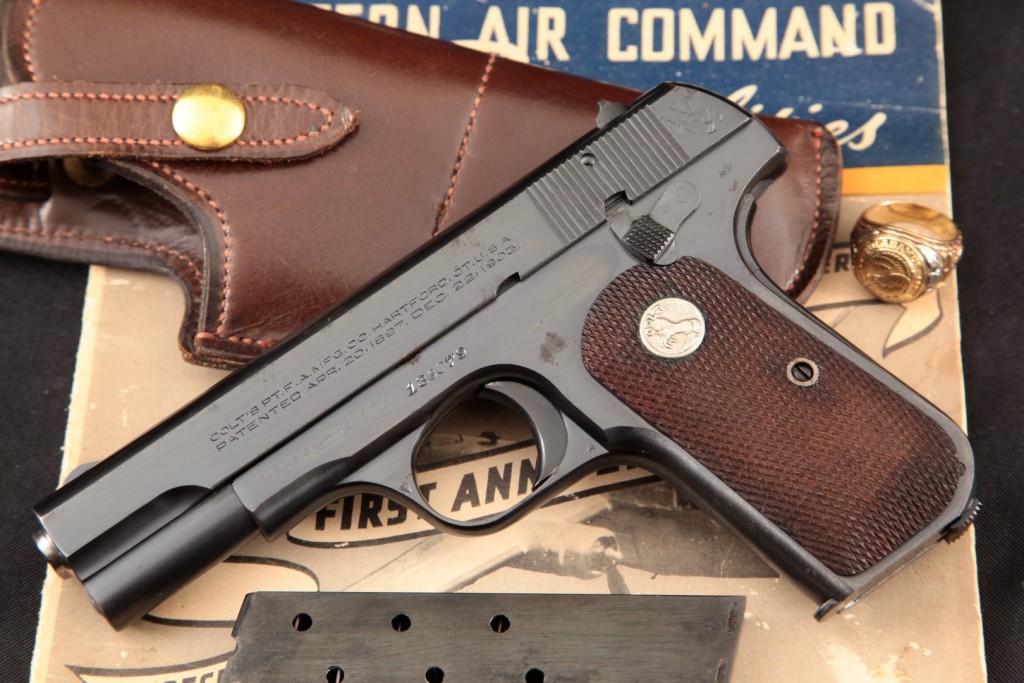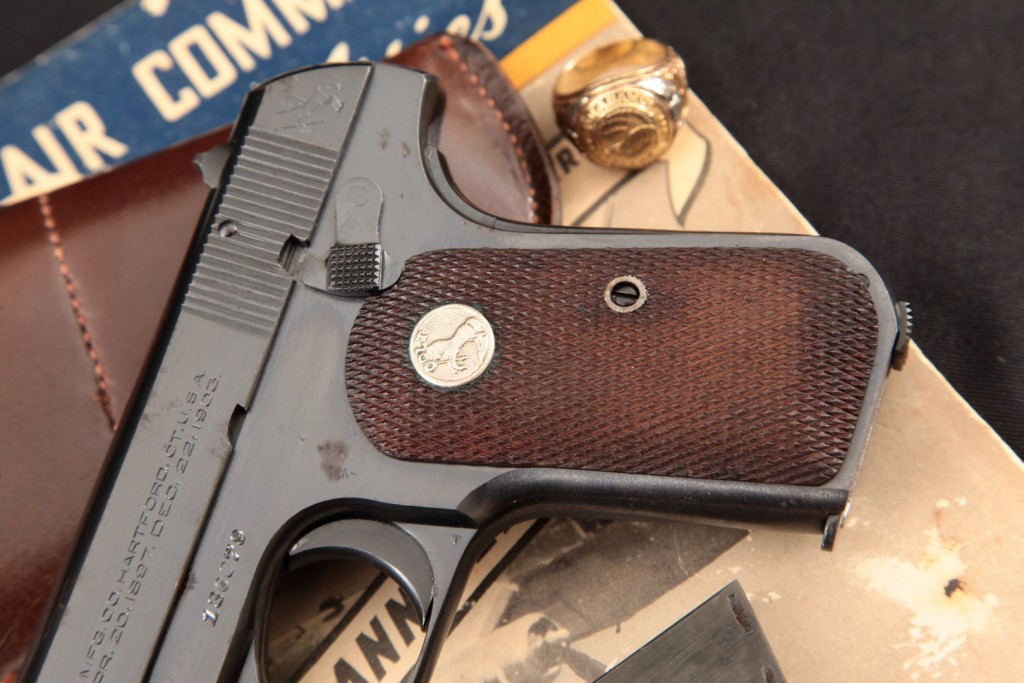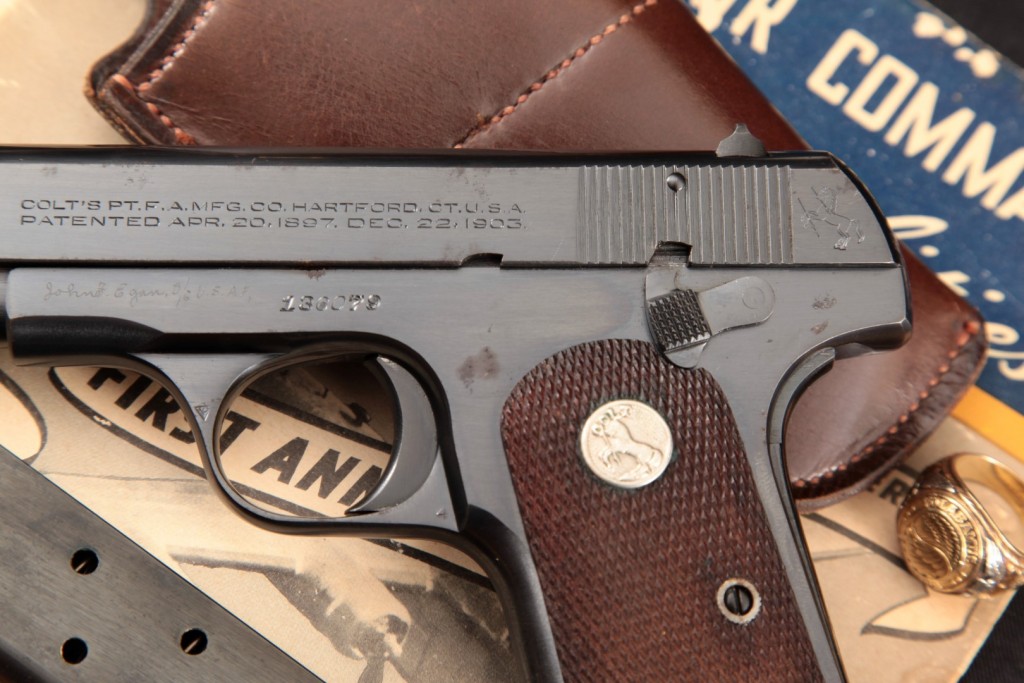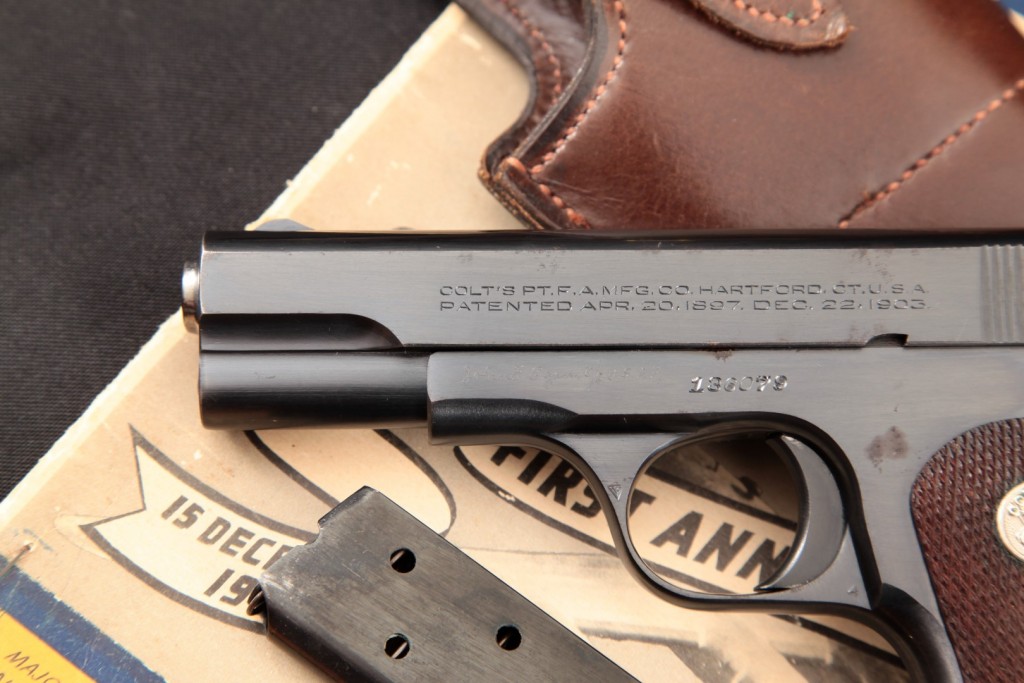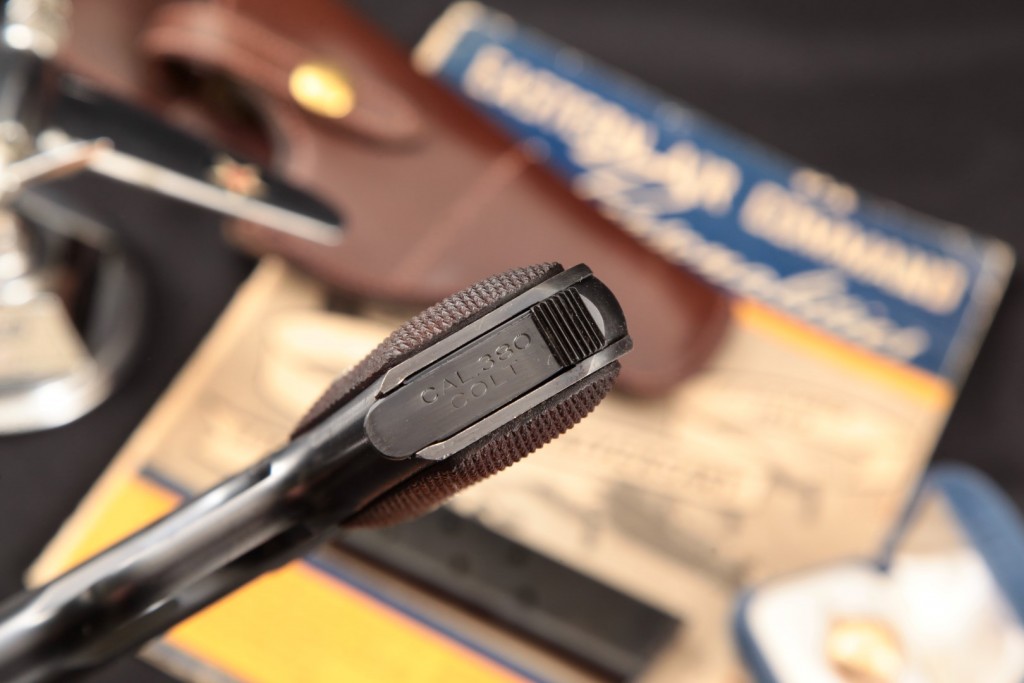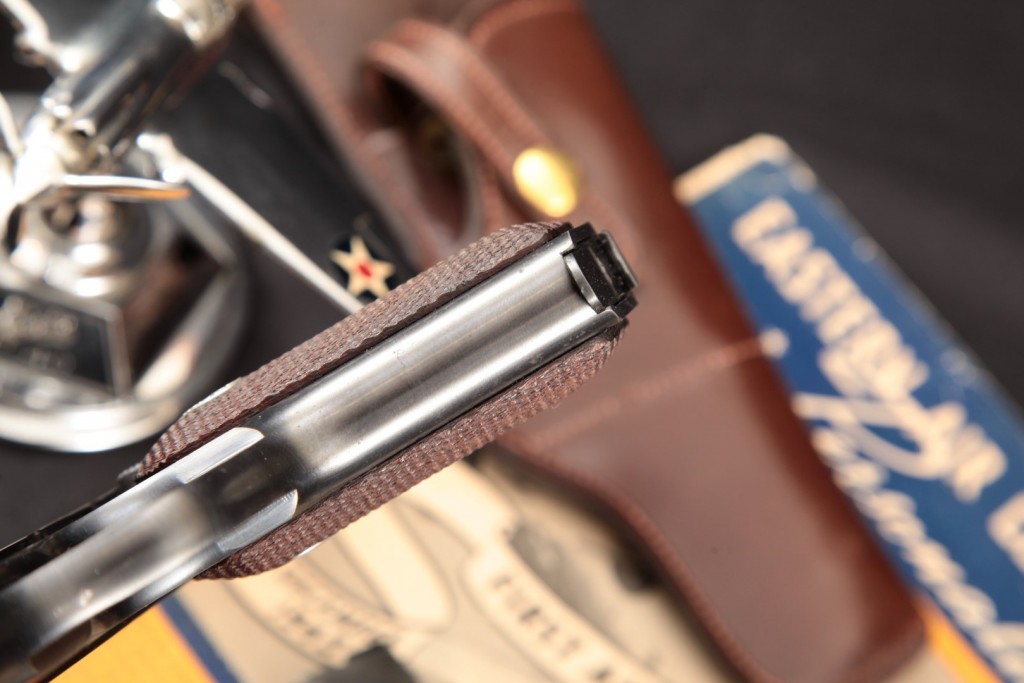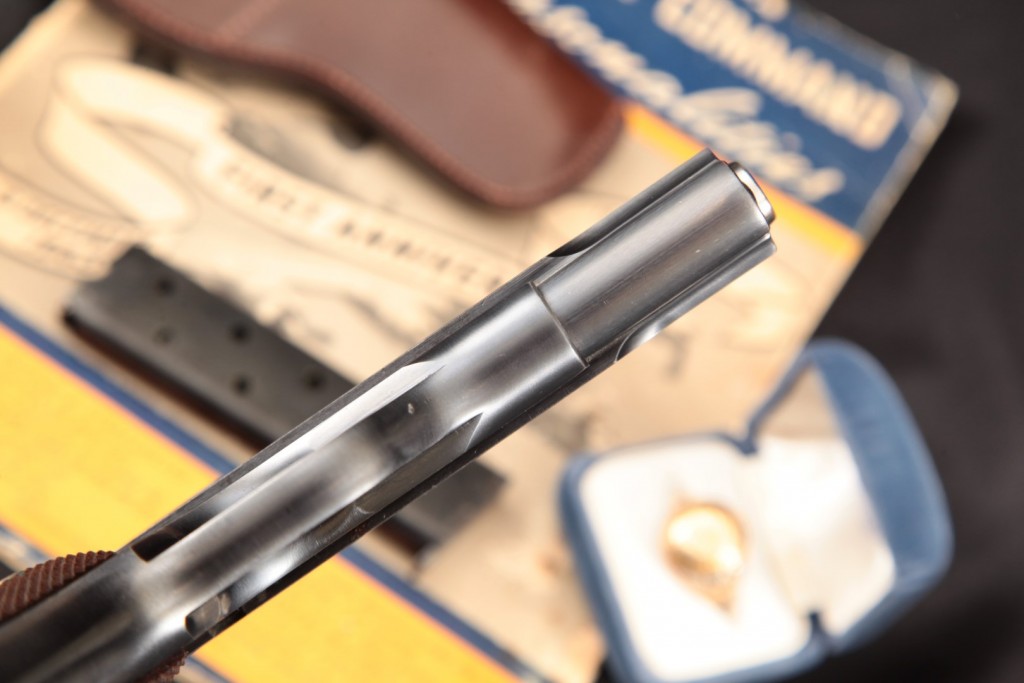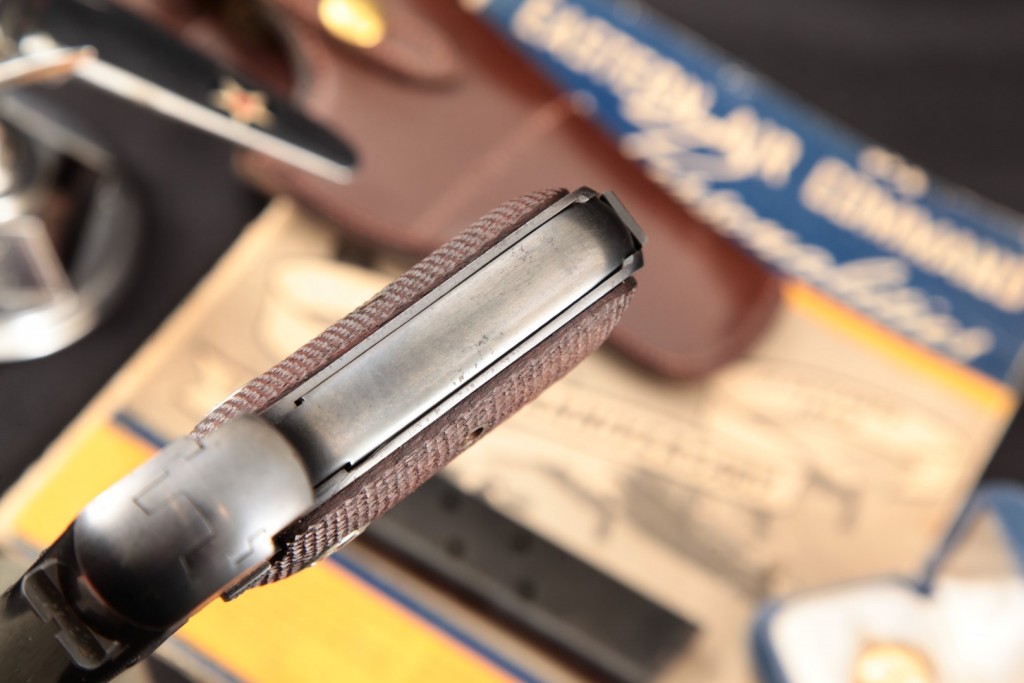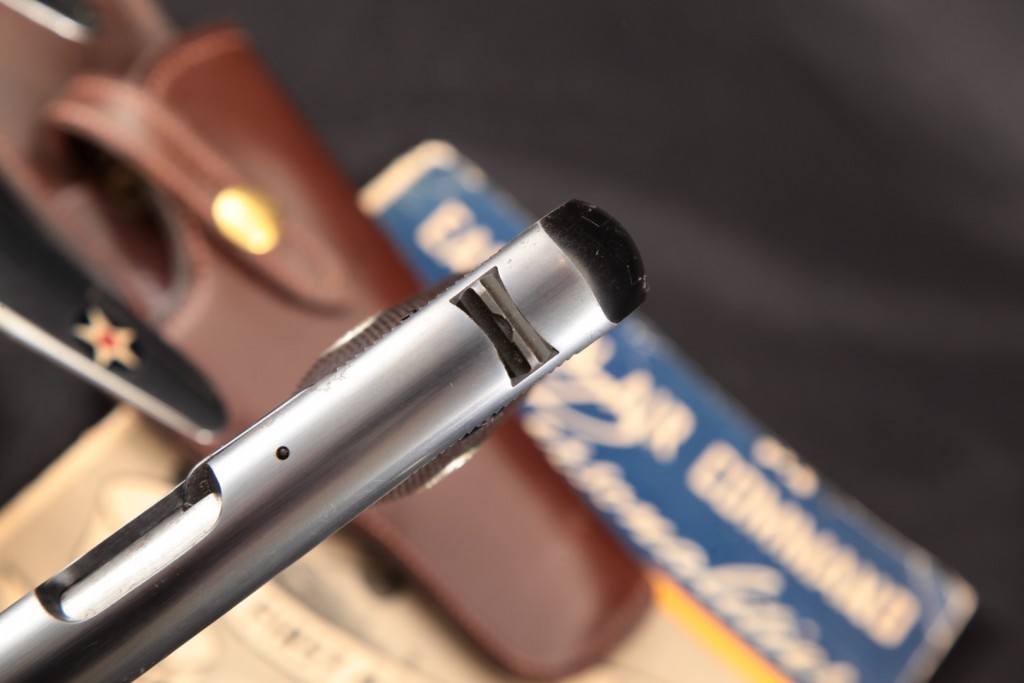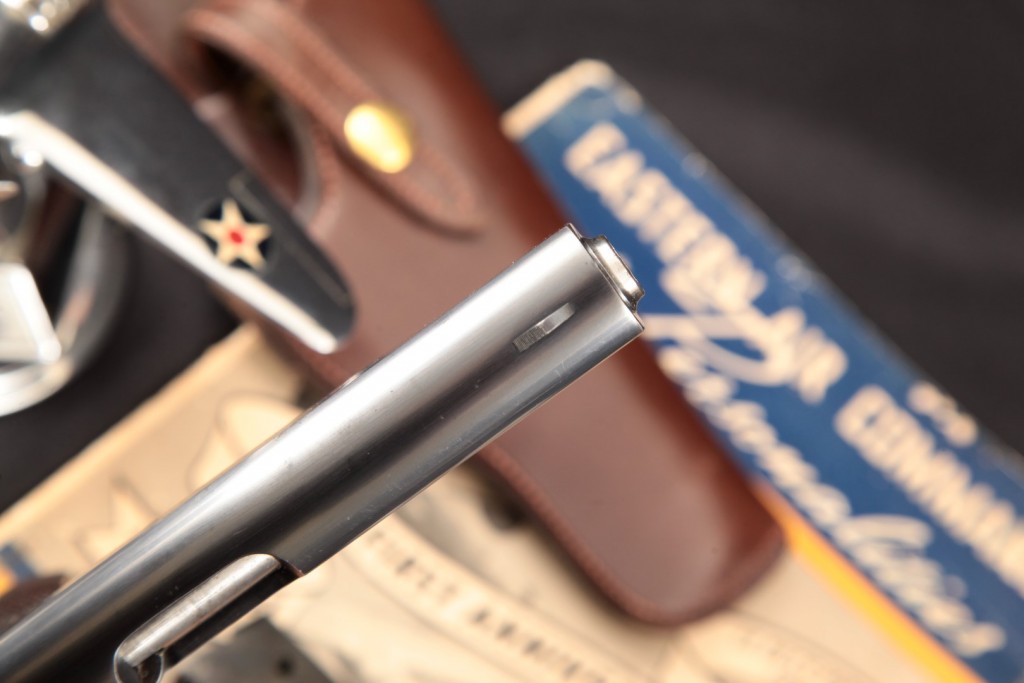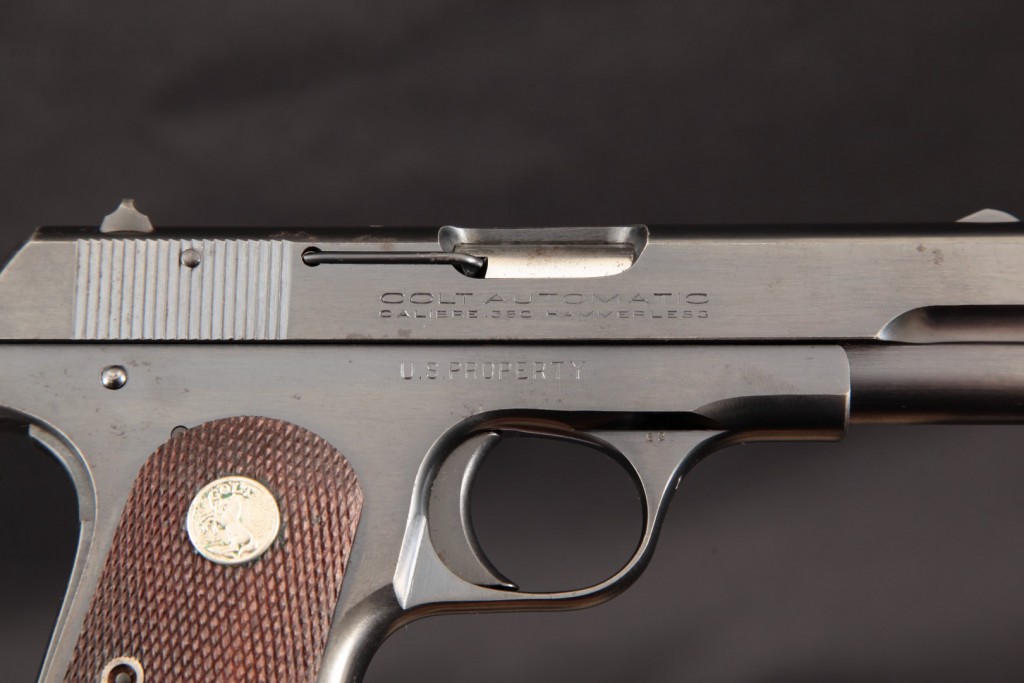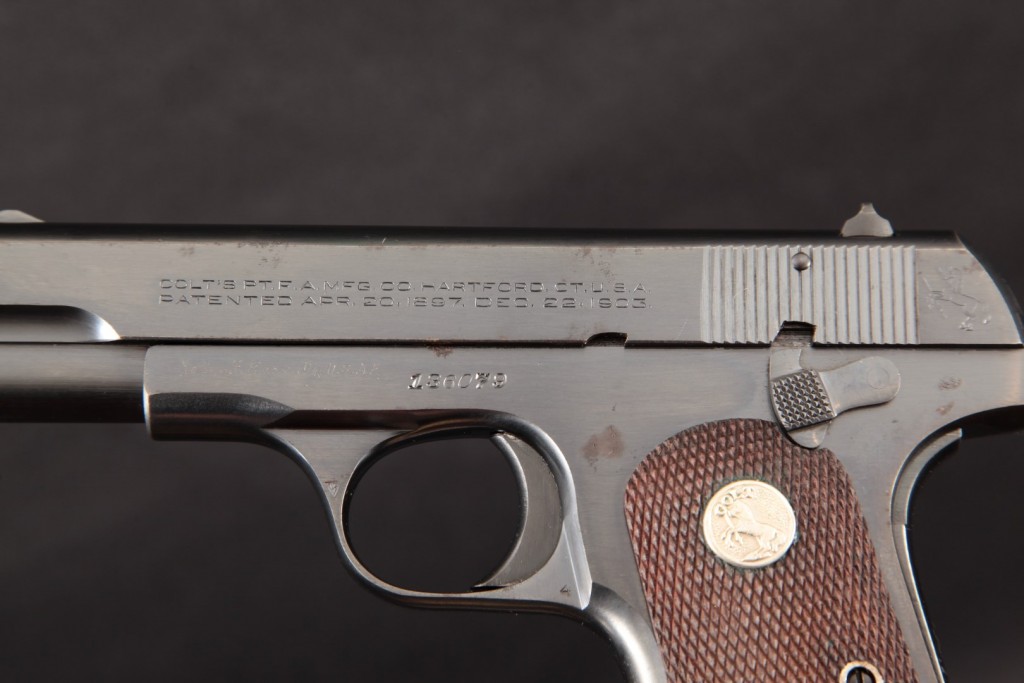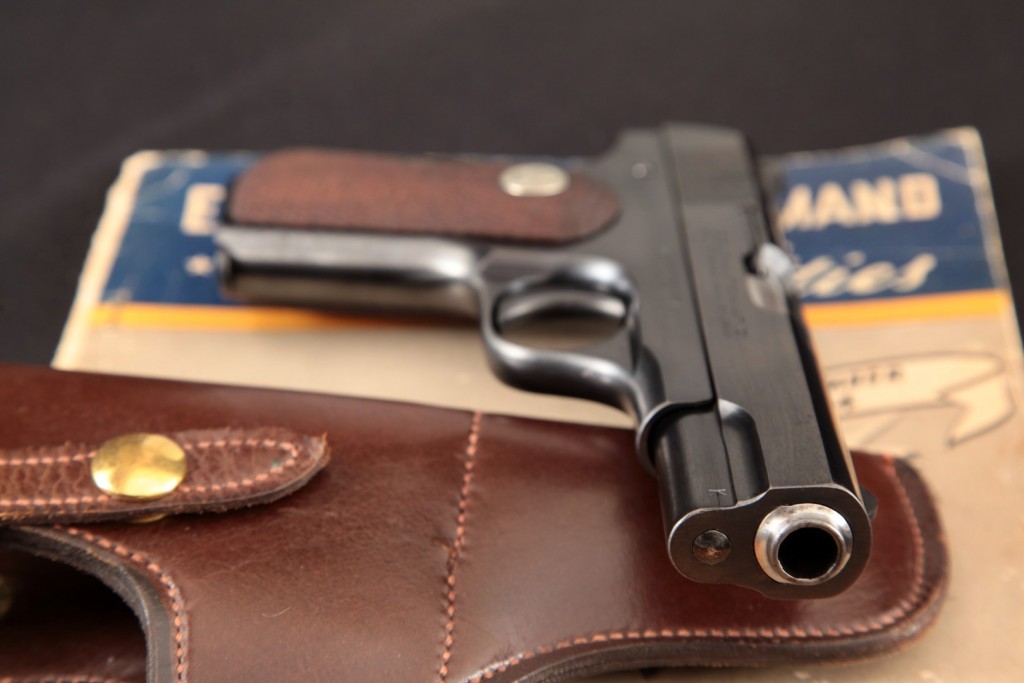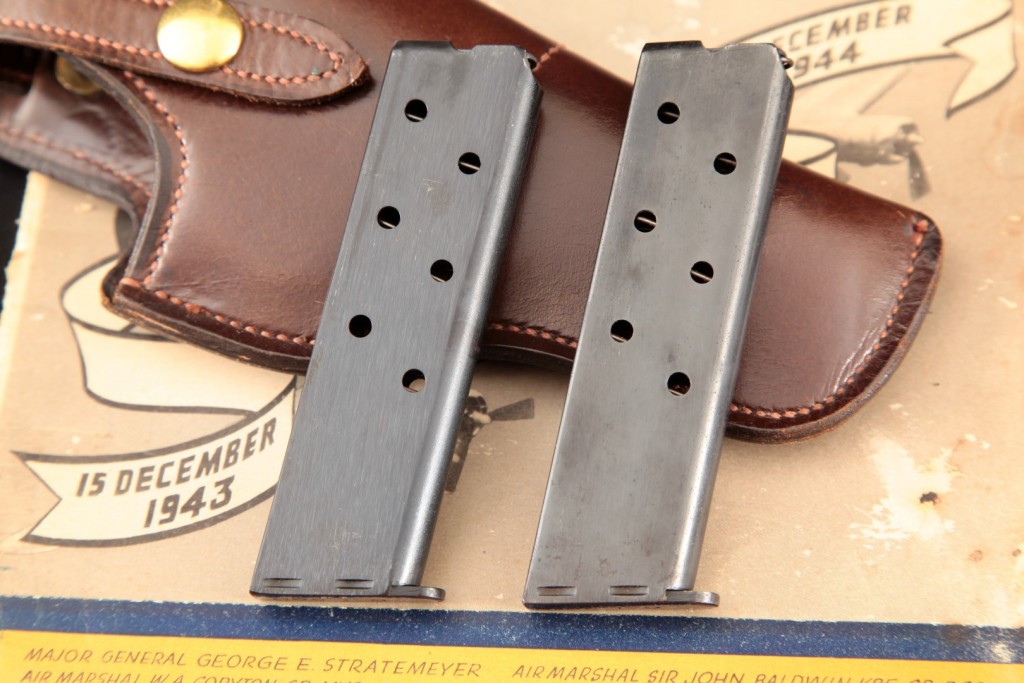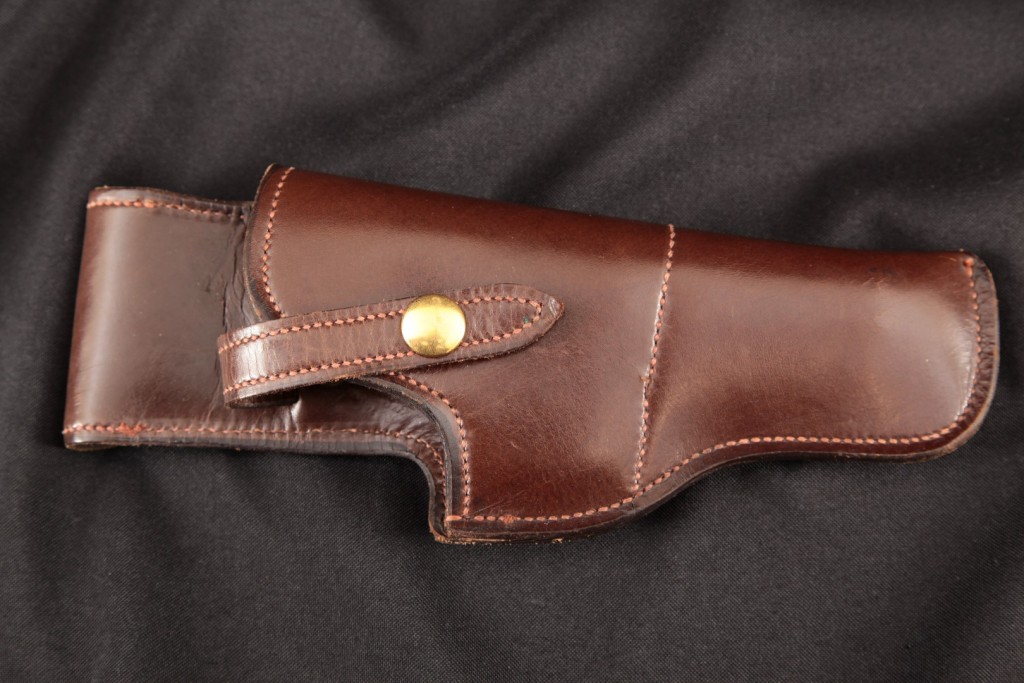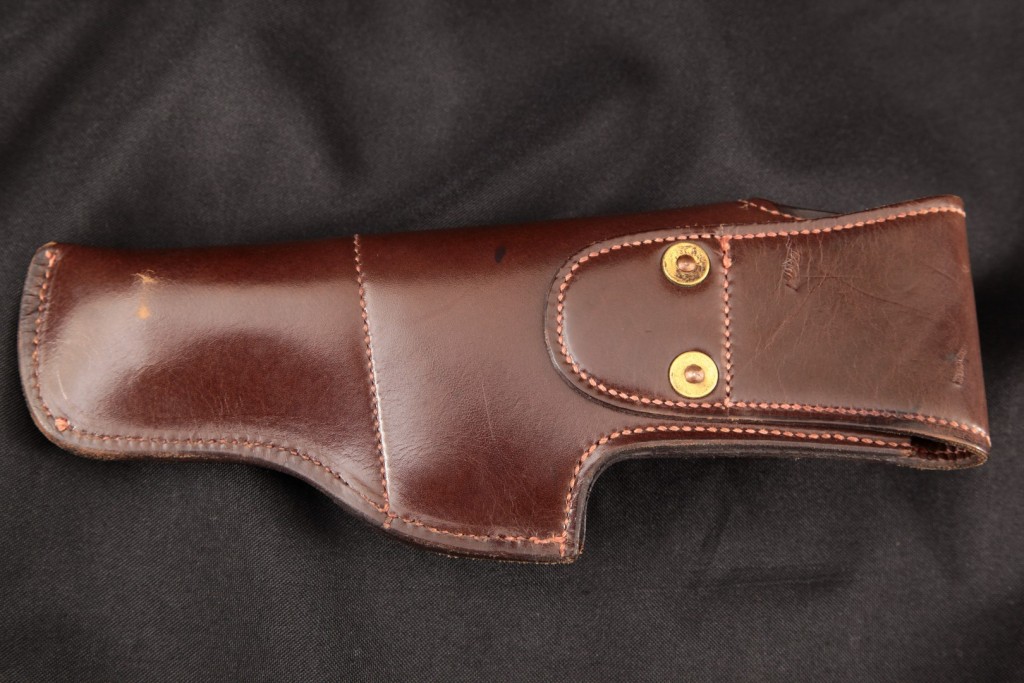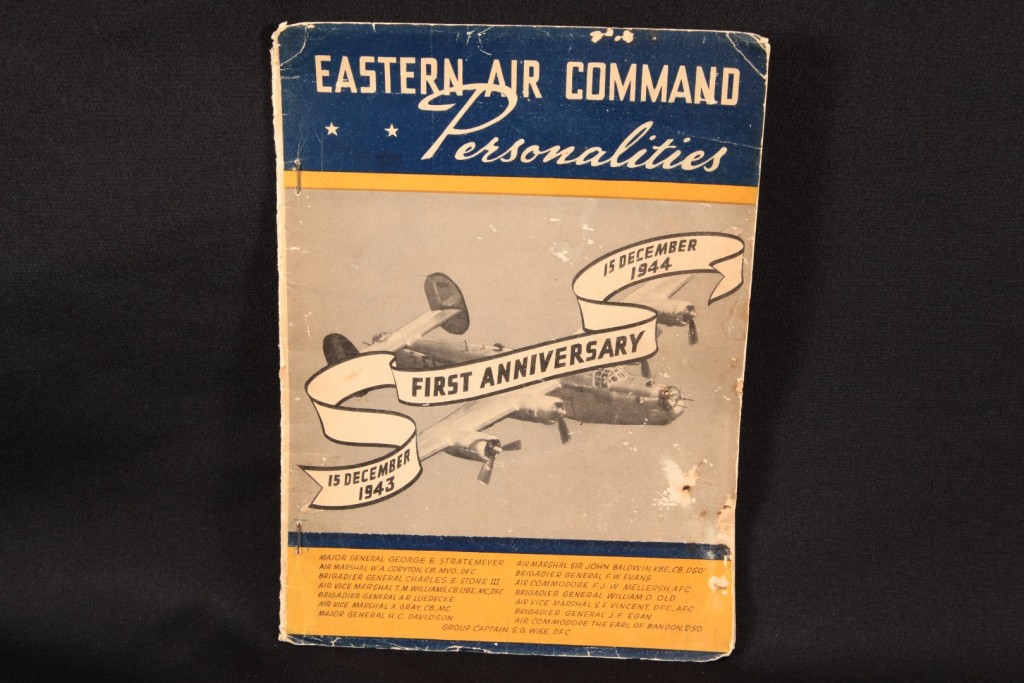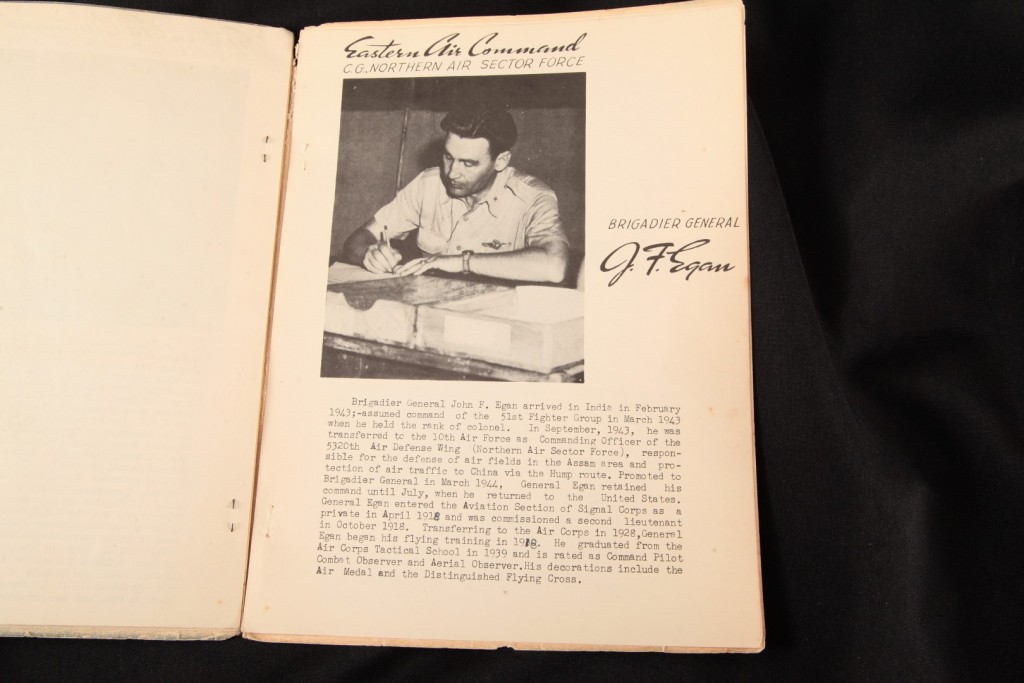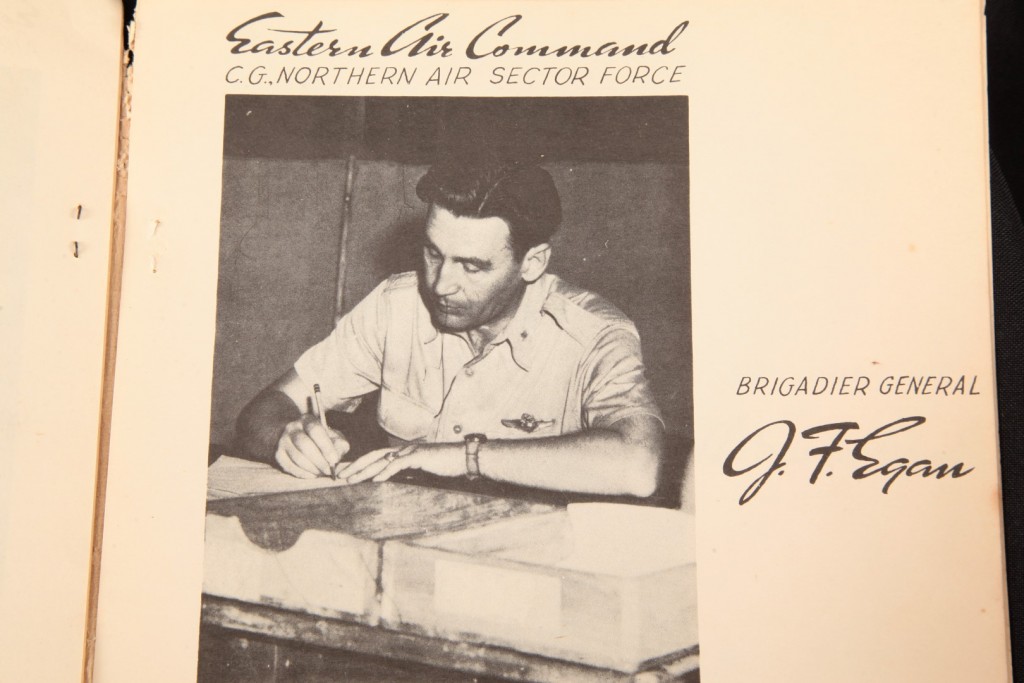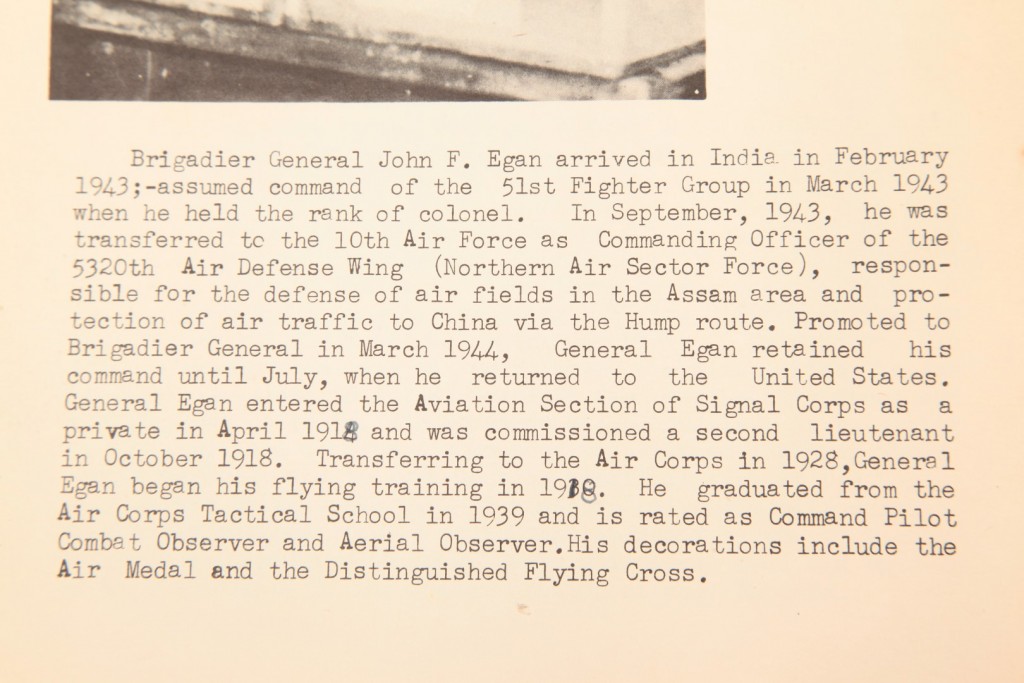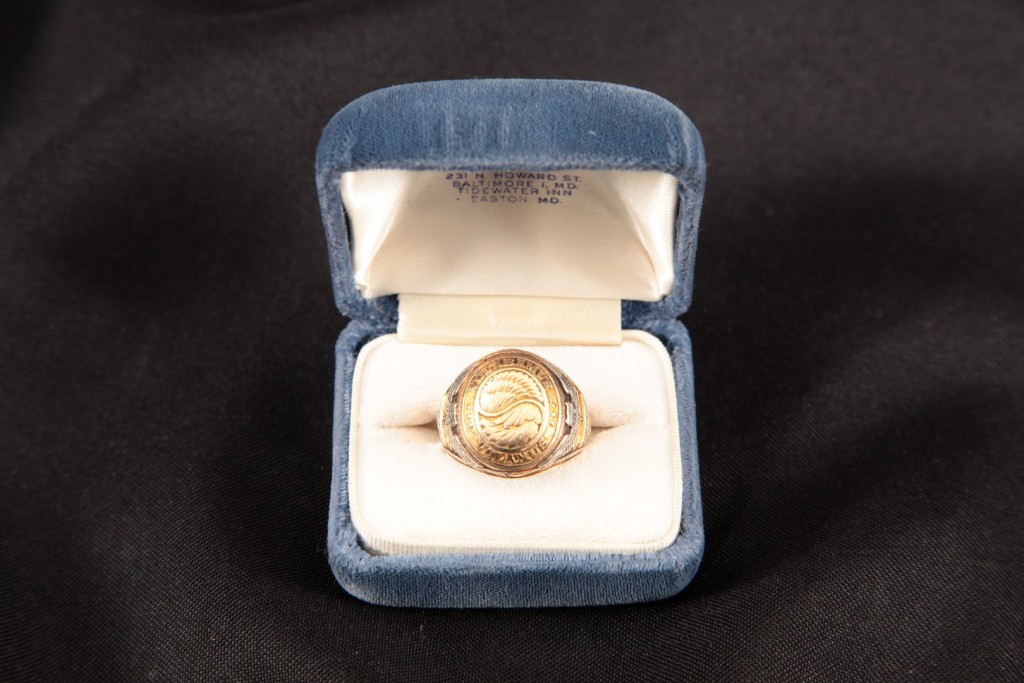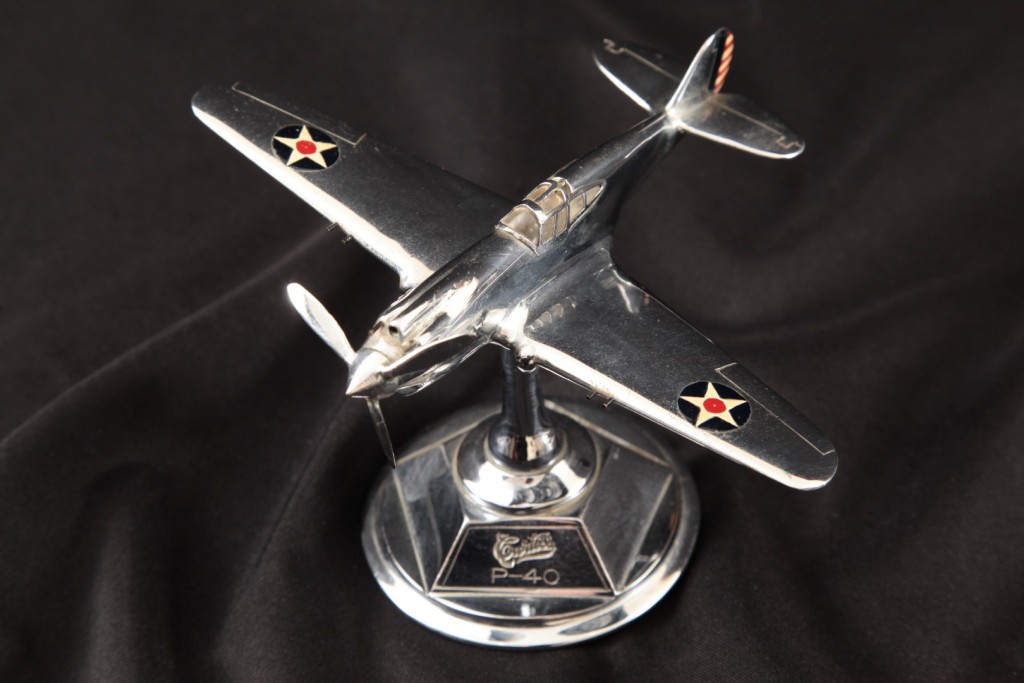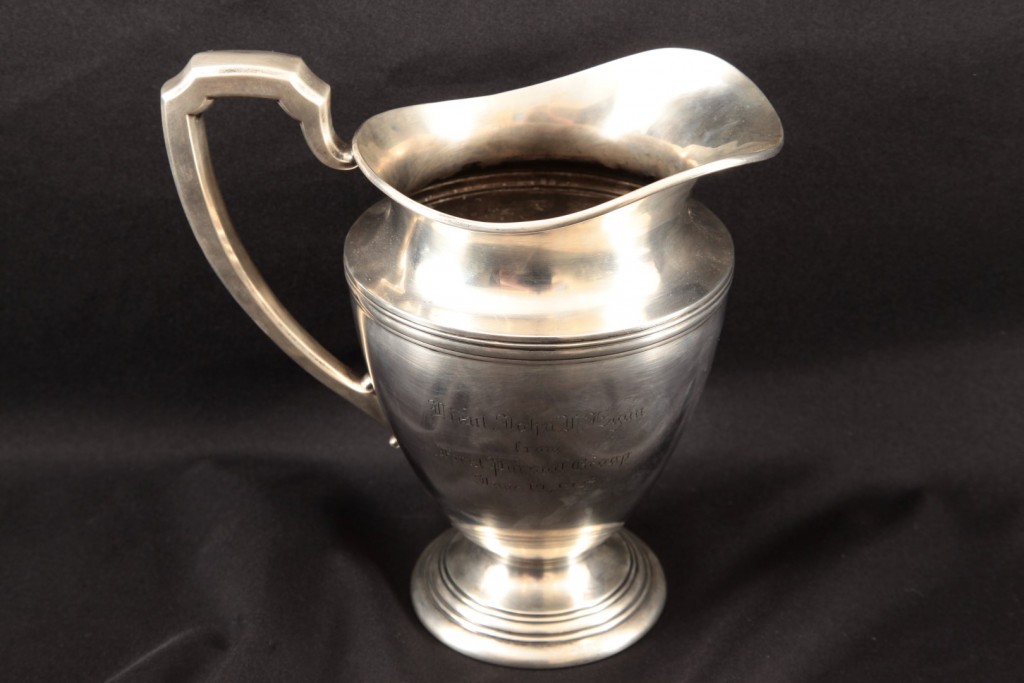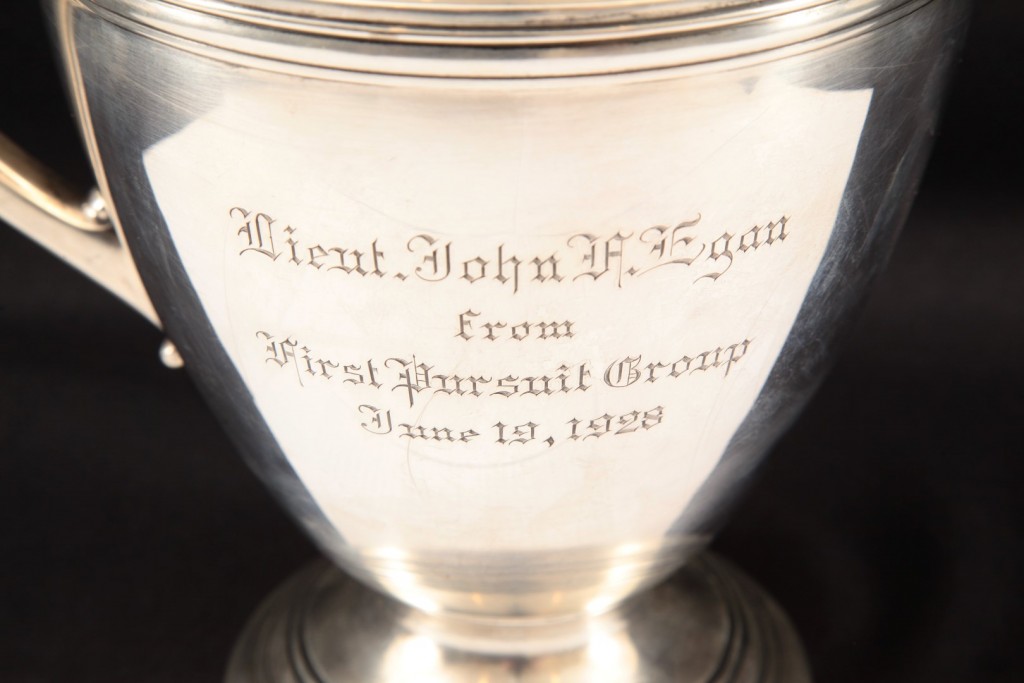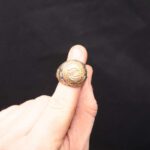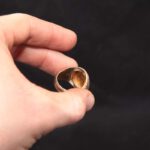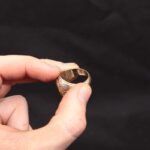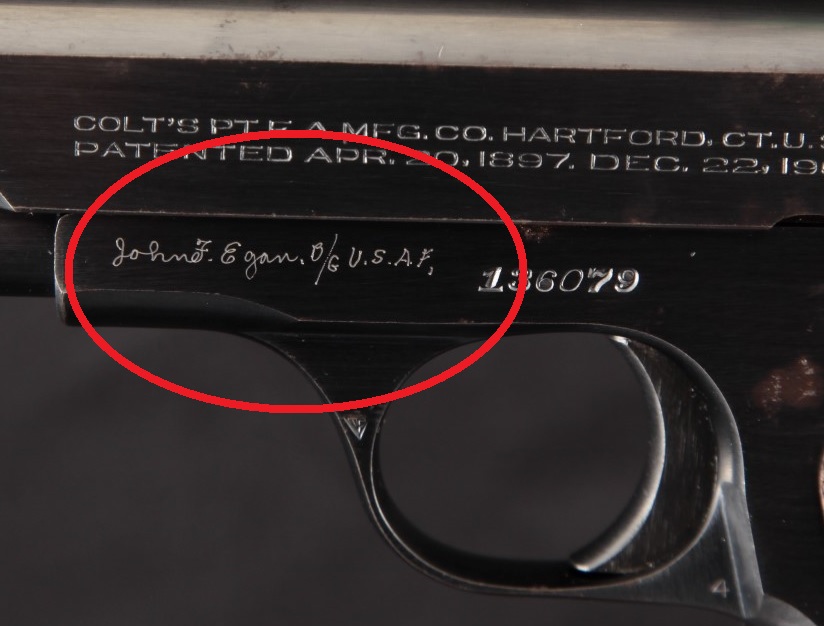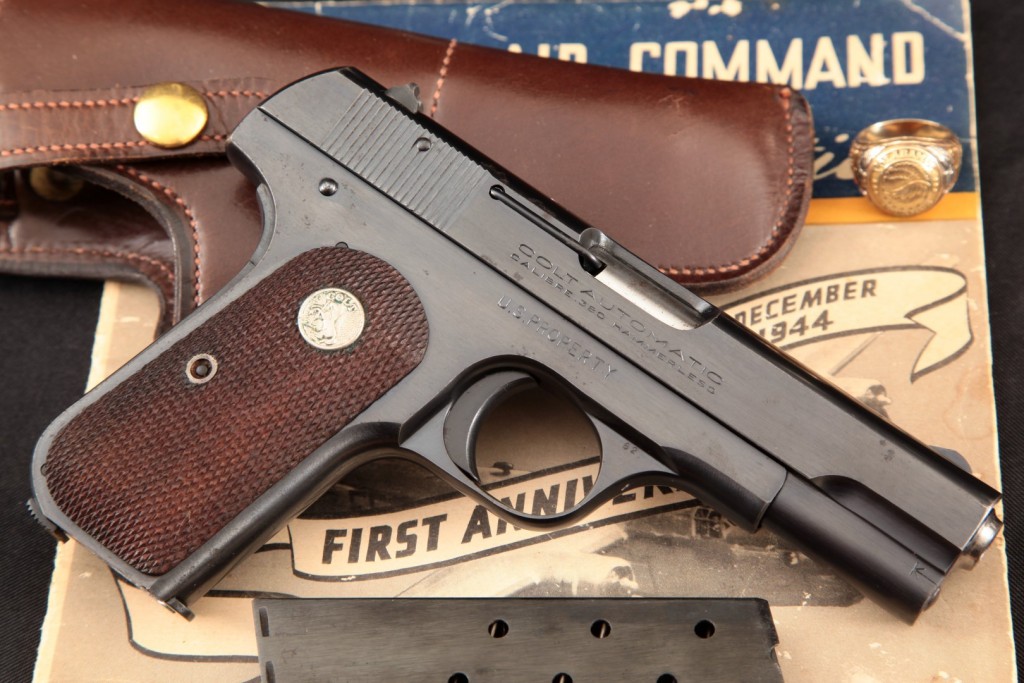
Colt Model 1908 General Officer’s Pistol issued to General John F. Egan
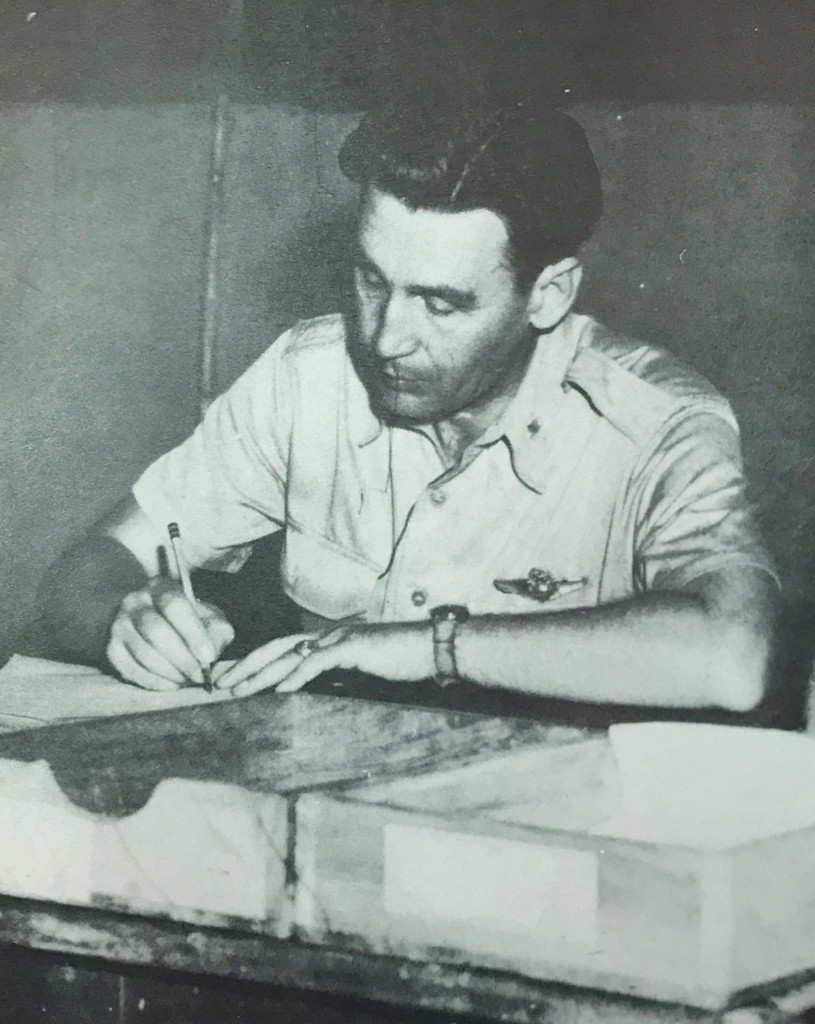
____________________________________________________________________________________________
FOR SALE: $8,500
____________________________________________________________________________________________
General John F. Egan
John F. Egan was born in New York City, N.Y., on Nov. 7, 1898. During the World War he served as a private first class, Aviation Section, Signal Reserve, from April 2 until Oct. 9, 1918, when he was appointed a second lieutenant (temporary) in the Air Service. Upon demobilization, he was honorably discharged from the Army on Jan. 7, 1919, and appointed a second lieutenant, Air Service Reserve, on Sept. 13, 1919. He was promoted to first lieutenant, Air Service Reserve, on May 26, 1923, and commissioned a second lieutenant in the Air Corps, Regular Army, on June 7, 1928.
Upon enlisting in the Army, he was assigned to the School of Military Aeronautics at Princeton University, N.J., in April 1918. He transferred to Souther Field, Ga., the following July, and served there until he was commissioned in October 1918. He then moved to Carlstrom Field, Fla., as a student officer at the Air Service Flying School until he was honorably discharged on Jan. 7, 1919.
As a first lieutenant in the Air Service Reserve, he was ordered to extended active duty in January 1927, and assigned to the 50th Observation Squadron at Langley Field, Va. The following July he transferred to Selfridge Field, Mich., as Operations Officer, 17th Pursuit Squadron, until September 1929, when he was detailed to Brooks Field, Texas, where he completed his ground school instruction in February 1930. He then graduated from the Air Corps Advanced Flying School, Kelly Field, Texas, the following June, and returned to Selfridge Field, Mich., where he resumed his duties with the 17th Pursuit Squadron. He became Operations Officer of the 36th Pursuit Squadron until September 1932, when he was assigned to duty with the 1st Pursuit Group at the same station.
He sailed for Hawaii in February 1933 and became engineering officer, 6th Pursuit Squadron, at Schofield Barracks, the following month. Returning to the United States in April 1935, he was named Flight Commander, “A” Flight, 17th Pursuit Squadron, at Selfridge Field, Mich., and subsequently served as Squadron Operations Officer and Commanding Officer of the 17th Pursuit Squadron for short periods.
In July 1938, he became a Flight Commander, 94th Pursuit Squadron, General Headquarters Air Force, Selfridge Field, and in May 1939, was assigned to the Air Corps Tactical School at Maxwell Field, Ala. He graduated in August 1939 and resumed his duties as Flight Commander, 94th Pursuit Squadron, at Selfridge Field, serving until the following November when he was named to command the 40th Pursuit Group at Selfridge Field.
In May 1941, he became Assistant to the Assistant Chief of Staff, G-3, First Air Force, at Mitchel Field, N.Y., and then became Assistant Chief of Staff, A-3, of the I Fighter Command. He subsequently was named Officer in Charge of Pursuit Training, I Fighter Command, at Mitchel Field, until February 1943 when he was given an assignment as Fighter Group Commander in the China-Burma-India Theater of Operations. He was placed in command of an Air Defense Wing in that same area in September 1943. In April 1944, he became Commanding General, 5320 Air Defense Wing (Provincial) in India, serving as such until July 1944 when he was assigned to the Army Air Force Personnel District Command, Atlantic City, N.J. He remained there until September 1944 when he assumed duty as Commanding General, 77th Flying Training Wing, Foster Field, Texas.
He is rated a command pilot, combat observer and aircraft observer.
____________________________________________________________________________________________
DECORATIONS
He was awarded the Silver Star in November 1943 with the following citation, “Colonel Egan, Executive Officer of an Air Defense Wing, in conjunction with Lieutenant Colonel David W. Wallace, planned and executed below roof-top level bombing and made the first offensive missions employing this technique in this sector against heavily defended enemy installations. During the period from Oct. 28, 1943, to Nov. 9, 1943, Colonel Egan, flying a P-51 aircraft carrying two five-hundred pound demolition bombs, attacked the Headquarters Area at Myitkyina. This target, a Japanese regimental headquarters, was known to be protected by ample machine guns and possibly antiaircraft artillery. In addition, it was adjacent to two enemy airfields. So successful were these missions that on five successive occasions – Oct. 28-30, Nov. 5, 8 and 9, a total of five buildings were destroyed with other damage accomplished which could not be observed. On each occasion these attacks were met by ground fire from machine guns which ranged from meager to intense. The spirit evidenced by Colonel Egan has been an example of great value to the morale and confidence of the pilot personnel in this sector, and the conduct, daring and skill with which these missions were performed reflects much credit on himself and the military service.”
____________________________________________________________________________________________
PROMOTIONS
First lieutenant, Dec. 1, 1933; captain (temporary), May 21, 1935; captain (permanent), June 7, 1938; major (temporary), Jan. 31, 1941; lieutenant colonel (temporary), Jan. 5, 1942; colonel (temporary), March 1, 1942; brigadier general (temporary), March 1, 1944.
(Current as of June 30, 1945)
____________________________________________________________________________________________
Transcribed from “The Command Post”, Vol 1. No. 17 June 30, 1944
Courtesy of Mr. William Johnson
http://www.cbi-history.com/part_vi_1st_tacs.html
AIR-GROUND SUPPORT BIG FACTOR IN BURMA
The close air support rendered to Lt. Gen. Joseph W. Stilwell’s Chinese-American forces by fighters, fighter bombers and dive bombers of the Third Tactical Air Force, Eastern Air Command, has been a significant factor n the spectacular advance on Myitkyina.These planes – U.S.A.A.F. P-40’s, P-51’s and A-36’s under the immediate jurisdiction of Brigadier General John F. Egan’s Northern Air Sector Force – operate from advanced bases in North Burma. Some of their missions are flown against predetermined targets. Other flights, assigned specifically to give direct air support to ground troops, keep up a continuous patrol over areas where fighting is proceeding, with instructions to take their directions from the ground.When the flight reaches its assigned area, it is told to stand by for instructions. The ground commander selects the building – which he wants attacked, and transmits this information to a fighter control team of U.S.A.A.F. personnel with whom he is in constant touch. These teams, who have previously familiarized themselves with the terrain by flying over it in liaison type aircraft, are thoroughly acquainted with the problem faced by the pilot, and have the additional advantage of being able to talk to him in language he understands.The air control officer contacts the fighter flight by radio and “talks” it into the target with the use of gridded photographs, maps, and their specialized knowledge of the terrain. Panels and other signals at the front lines may also be used.This air-ground co-ordination proved highly successful during the advance on Myitkyina and in the siege of the town. In one case fighter pilots were strafing a target only thirty seconds after the ground commander had told the fighter control team he wanted it to be hit.The following conversation illustrates a typical operation by General Egan’s flying artillery as they are directed by the fighter control team on the ground. In this case the ground commander had just discovered that there was a large Japanese gun, camouflaged, about a mile south of Myitkyina. The fighter control team, working with intelligence officers, found the precise location of the gun on a photograph. The air control officer dashed back to his portable radio.Air Control Officer: “Hello, Dragonfly Red Leader, this is Ground three one. Over.”Flight Leader: “Hello, Ground three one, this is Dragonfly Red. Over.”Air Control Officer: “Hello D.F. Red, I have a target for you. Go to co-ordinate King one nine and I will describe the target to you. Over.”Flight Leader: “Roger, Ground three one, will do… Hello, Ground three one, I am now circling the area. Over.”Air Control Officer: “Roger, D.F. Red. Do you see that point where the auto road running north and south crosses the rail-road? It forms a cross. Over.”Flight Leader: “Roger, I see where they cross.”Air Control Officer: “O.K. About 300 yards west of there you’ll see a cleared-out area – looks like a rice paddy – with small trees on the south and east sides. In the center of the clearing there is one large tree. Do you see that area? Over.”Flight Leader: “Roger, I believe I have it spotted. Is there a small creek running east and west of the target area? Over.”Air Control Officer: “Roger, D.F. Red, that is correct. There is a large Jap gun, well camouflaged, in the trees on the south side of the clearing. Do you see any signs of it or of camouflage? Over.”Flight Leader: “No, I see the trees you mention on the south side but nothing showing there. Over.”Air Control Officer: “Roger D.F. Red, see if you can put some bombs right in those trees. A direct hit will get him. Bomb from west to east and then strafe. Over.”Flight Leader: “Roger, ground three one, will do. Out.”
The planes can be seen beginning their dive on the target from the air liaison post on the ground. A moment later the explosion of their bombs is heard. The conversation resumes:
Flight Leader: “Hello, Ground three one, this is Dragonfly Red. Over.”Air Control Officer: “Hello, D.F. Red, this is Ground three one. Over.”Flight Leader: “Hello, Ground three one, we got two direct hits in those trees. There is a big column of smoke coming out of there. Over.”Air Control Officer: “Hello, D.F. Red. Good work boys, two direct hits are bound to have got the gun. Over.”Flight Leader: “Roger, Ground three one, we are resuming patrol. Over.”Air Control Officer: “Roger, D.F. Red, and thank you. Out.”The use of the technique described above has resulted in the destruction of scores of Japanese installations. This technique was first developed by Col. Philip Cochran in Burma, and was used with great success by his Air Commando Group in furnishing air support to the Chindit Forces under the late Major General Charles O. Wingate and his successor, Major General W.D. Lentaigne.
